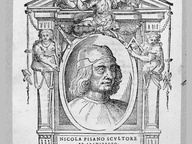FATTORI. Capolavori e aperture sul ’900

Giovanni Fattori, La Signora Martelli a Castiglioncello, ca. 1867, olio su tavola, cm. 20x35
Dal 14 October 2021 al 20 March 2022
Torino
Luogo: GAM – Galleria Civica d'Arte Moderna e Contemporanea
Indirizzo: Via Magenta 31
Orari: da Martedì a Domenica 10.00-18.00; Giovedì 13:00-21:00. La biglietteria chiude un’ora prima
Curatori: Virginia Bertone e Silvestra Bietoletti
Costo del biglietto: Intero € 13,00 | Ridotto € 11,00
Telefono per informazioni: +39 011 0881178
Sito ufficiale: http://www.gamtorino.it
La GAM - Galleria Civica d’Arte Moderna e Contemporanea di Torinoospita per la prima volta nei suoi spazi una grande retrospettiva dedicata all’opera di Giovanni Fattori (Livorno 1825- Firenze 1908), uno dei maestri assoluti dell’Ottocento italiano che seppe interpretare in modo originale e innovativo tanto i temi delle grandi battaglie risorgimentali quanto i soggetti legati alla vita dei campi e al paesaggio rurale a cui seppe infondere,analogamente ai ritratti, nuova dignità e solennità.
La mostra “Fattori. Capolavori e aperture sul ‘900”, che apre al pubblico dal 14 ottobre per proseguire fino al 20 marzo 2022, è organizzata e promossa da GAM Torino - Fondazione Torino Musei e da 24 ORE Cultura – Gruppo 24 ORE in collaborazione con l’Istituto Matteucci e il Museo Civico Giovanni Fattori di Livorno.
Il percorso espositivo, che presenta oltre 60 capolavori dell’artista livornese, tra cui tele di grande formato, preziose tavolette e una selezione di acqueforti, si articola in nove sezioni e copre un ampio arco cronologico che dal 1854 giunge al 1894, dalla sperimentazione macchiaiola e da opere capitali degli anni Sessanta e Settanta fino alle tele dell’età matura, che ne rivelano lo sguardo acuto e innovatore, capace di aperture sull’imminente ’900.
Le curatrici del progetto, Virginia Bertone (Conservatore Capo della GAM) e Silvestra Bietoletti (Storica dell’arte, specialista di pittura toscana dell’Ottocento), affiancate dal Comitato scientifico composto da Cristina Acidini, Giuliano Matteucci e Fernando Mazzocca, hanno concepito un articolato progetto espositivo dove si succedono, secondo una scansione cronologica e tematica, le opere del maestro la cui vicenda artistica seppe incontrare, già nel corso dell’Ottocento, anche il gusto dei torinesi, come testimonia la presenza di Fattori alle mostre allestite in città - sia alle manifestazioni annuali della Società Promotrice di Belle Arti di Torino sia alle Esposizioni Nazionali - dalla primavera del 1863 e fino al 1902.
A concludere il percorso sono alcune opere emblematiche di allievi di Fattori e di artisti influenzati dalla suggestione della sua pittura – Plinio Nomellini, Oscar Ghiglia, Amedeo Modigliani, Lorenzo Viani, Carlo Carrà, Giorgio Morandi – a testimonianza della lezione che il maestro livornese seppe stimolare nella pittura italiana del Novecento.
Ad arricchire la mostra è un suggestivo video che racconta i luoghi, le vicende umane e le relazioni artistiche che hanno accompagnato la vita del maestro attraverso le parole dello stesso Fattori, desunte da lettere e documenti d’epoca. Un viaggio nel viaggio, che vuole avvicinare il visitatore all’artista livornese la cui indole fu schiva eppure così carismatica da influenzare future generazioni di artisti.
FATTORI E TORINO
Nella primavera del 1863 Giovanni Fattori inviava alla mostra della Società Promotrice di Belle Arti di Torino la sua Ambulanza militare (Episodio dell’indipendenza italiana del 1859). Per presentarsi per la prima volta al pubblico torinese, l’artista aveva voluto riproporre il soggetto de Il campo italiano dopo la battaglia di Magenta che gli aveva assicurato la vittoria al Concorso Ricasoli, tappa fondamentale per l’avvio della sua carriera artistica.
La presenza di Fattori alle mostre allestite nella capitale subalpina – sia alle manifestazioni annuali della Promotrice sia alle Esposizioni Nazionali – si sarebbe ripetuta con cadenza regolare fino al 1902. Tra i suoi primi estimatori è il torineseMarco Calderini, brillante allievo di Antonio Fontanesi e autorevole animatore della scena culturale cittadina, che entra in contatto con lui per l’acquisto di una cartella di litografie, a testimonianza di un vivo apprezzamento anche per la sua opera grafica.
Nel corso dei primi anni del Novecento, l’attenzione per l’opera di Fattori si intensifica sino a divenire il modello di un nuovo “ideale classico”: furono allora autorevoli collezionisti, come l’imprenditore Riccardo Gualino, ad arricchire le proprie raccolte con capolavori come il Ritratto della seconda moglie, conservato alla Galleria d’Arte Moderna di Palazzo Pitti a Firenze e presente in mostra.
Nel 1930, anno in cui aveva assunto la direzione del Museo Civico di Torino, Vittorio Viale riuscì ad assicurare alle collezioni torinesi la preziosa tavola Gotine rosse, dipinto appartenuto alle collezioni fiorentine di Giovanni Malesci e poi di Mario Galli e oggi custodito alla GAM. E proprio la vicenda dell’acquisto di Gotine rosse offrirà lo spunto per sottolineare la fortuna di Fattori e di altri artisti toscani dell’Ottocento a Torino nel segno di Lionello Venturi.
La mostra “Fattori. Capolavori e aperture sul ‘900”, che apre al pubblico dal 14 ottobre per proseguire fino al 20 marzo 2022, è organizzata e promossa da GAM Torino - Fondazione Torino Musei e da 24 ORE Cultura – Gruppo 24 ORE in collaborazione con l’Istituto Matteucci e il Museo Civico Giovanni Fattori di Livorno.
Il percorso espositivo, che presenta oltre 60 capolavori dell’artista livornese, tra cui tele di grande formato, preziose tavolette e una selezione di acqueforti, si articola in nove sezioni e copre un ampio arco cronologico che dal 1854 giunge al 1894, dalla sperimentazione macchiaiola e da opere capitali degli anni Sessanta e Settanta fino alle tele dell’età matura, che ne rivelano lo sguardo acuto e innovatore, capace di aperture sull’imminente ’900.
Le curatrici del progetto, Virginia Bertone (Conservatore Capo della GAM) e Silvestra Bietoletti (Storica dell’arte, specialista di pittura toscana dell’Ottocento), affiancate dal Comitato scientifico composto da Cristina Acidini, Giuliano Matteucci e Fernando Mazzocca, hanno concepito un articolato progetto espositivo dove si succedono, secondo una scansione cronologica e tematica, le opere del maestro la cui vicenda artistica seppe incontrare, già nel corso dell’Ottocento, anche il gusto dei torinesi, come testimonia la presenza di Fattori alle mostre allestite in città - sia alle manifestazioni annuali della Società Promotrice di Belle Arti di Torino sia alle Esposizioni Nazionali - dalla primavera del 1863 e fino al 1902.
A concludere il percorso sono alcune opere emblematiche di allievi di Fattori e di artisti influenzati dalla suggestione della sua pittura – Plinio Nomellini, Oscar Ghiglia, Amedeo Modigliani, Lorenzo Viani, Carlo Carrà, Giorgio Morandi – a testimonianza della lezione che il maestro livornese seppe stimolare nella pittura italiana del Novecento.
Ad arricchire la mostra è un suggestivo video che racconta i luoghi, le vicende umane e le relazioni artistiche che hanno accompagnato la vita del maestro attraverso le parole dello stesso Fattori, desunte da lettere e documenti d’epoca. Un viaggio nel viaggio, che vuole avvicinare il visitatore all’artista livornese la cui indole fu schiva eppure così carismatica da influenzare future generazioni di artisti.
FATTORI E TORINO
Nella primavera del 1863 Giovanni Fattori inviava alla mostra della Società Promotrice di Belle Arti di Torino la sua Ambulanza militare (Episodio dell’indipendenza italiana del 1859). Per presentarsi per la prima volta al pubblico torinese, l’artista aveva voluto riproporre il soggetto de Il campo italiano dopo la battaglia di Magenta che gli aveva assicurato la vittoria al Concorso Ricasoli, tappa fondamentale per l’avvio della sua carriera artistica.
La presenza di Fattori alle mostre allestite nella capitale subalpina – sia alle manifestazioni annuali della Promotrice sia alle Esposizioni Nazionali – si sarebbe ripetuta con cadenza regolare fino al 1902. Tra i suoi primi estimatori è il torineseMarco Calderini, brillante allievo di Antonio Fontanesi e autorevole animatore della scena culturale cittadina, che entra in contatto con lui per l’acquisto di una cartella di litografie, a testimonianza di un vivo apprezzamento anche per la sua opera grafica.
Nel corso dei primi anni del Novecento, l’attenzione per l’opera di Fattori si intensifica sino a divenire il modello di un nuovo “ideale classico”: furono allora autorevoli collezionisti, come l’imprenditore Riccardo Gualino, ad arricchire le proprie raccolte con capolavori come il Ritratto della seconda moglie, conservato alla Galleria d’Arte Moderna di Palazzo Pitti a Firenze e presente in mostra.
Nel 1930, anno in cui aveva assunto la direzione del Museo Civico di Torino, Vittorio Viale riuscì ad assicurare alle collezioni torinesi la preziosa tavola Gotine rosse, dipinto appartenuto alle collezioni fiorentine di Giovanni Malesci e poi di Mario Galli e oggi custodito alla GAM. E proprio la vicenda dell’acquisto di Gotine rosse offrirà lo spunto per sottolineare la fortuna di Fattori e di altri artisti toscani dell’Ottocento a Torino nel segno di Lionello Venturi.
SCARICA IL COMUNICATO IN PDF
COMMENTI

-
 Dal 22 November 2025 al 3 May 2026
Torino | Sale Chiablese dei Musei Reali
Dal 22 November 2025 al 3 May 2026
Torino | Sale Chiablese dei Musei Reali
Orazio Gentileschi. Un pittore in viaggio
-
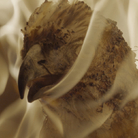 Dal 20 November 2025 al 25 January 2026
Firenze | Palazzo Strozzi
Dal 20 November 2025 al 25 January 2026
Firenze | Palazzo Strozzi
Andro Eradze. Bones of Tomorrow
-
 Dal 21 November 2025 al 28 March 2026
Cuneo | Complesso Monumentale di San Francesco
Dal 21 November 2025 al 28 March 2026
Cuneo | Complesso Monumentale di San Francesco
La Galleria Borghese. Da Raffaello a Bernini. Storia di una collezione
-
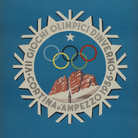 Dal 21 November 2025 al 29 March 2026
Treviso | Museo Nazionale Collezione Salce
Dal 21 November 2025 al 29 March 2026
Treviso | Museo Nazionale Collezione Salce
UN MAGICO INVERNO. Bianche emozioni dalla Collezione Salce
-
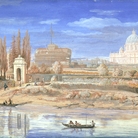 Dal 21 November 2025 al 12 April 2026
Roma | Museo di Roma a Palazzo Braschi
Dal 21 November 2025 al 12 April 2026
Roma | Museo di Roma a Palazzo Braschi
Ville e giardini di Roma. Una corona di delizie
-
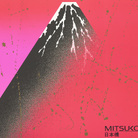 Dal 20 November 2025 al 6 April 2026
Bologna | Museo Civico Archeologico di Bologna
Dal 20 November 2025 al 6 April 2026
Bologna | Museo Civico Archeologico di Bologna
Graphic Japan. Da Hokusai al Manga
